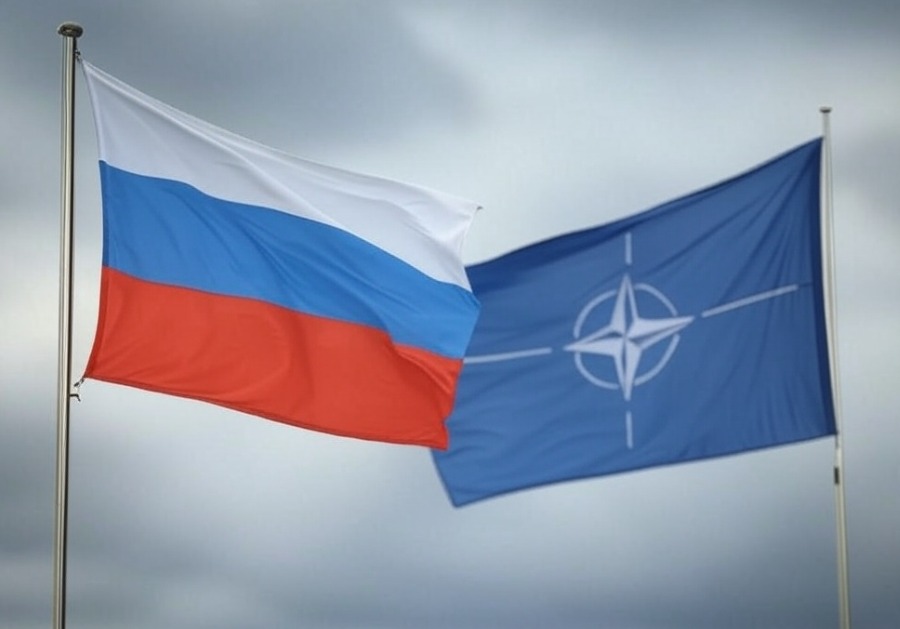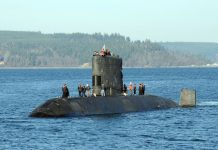Notwithstanding their geopolitical differences, both US President Donald Trump and Russian President Vladimir Putin agree on one crucial thing – the eastward expansion of NATO and its promise to include Ukraine in the security bloc led to the Ukraine War.
During his Alaska peace talks with Trump, apart from territory, one of the main demands put forth by Putin was a promise of neutrality by Ukraine and a promise by NATO that Kyiv will never be admitted to the security bloc.
At the same time, the Baltic states (Estonia, Latvia, Lithuania) and other Eastern European countries, such as Poland, are constantly warning that after Ukraine, Putin could attack a NATO country by 2028.
All this suggests that the NATO bloc and Russia have irreconcilable differences, and a direct conflict between the two is inevitable, sooner rather than later.
However, in the 1990s, there was a brief moment when it seemed highly likely that Russia could become part of the NATO bloc.
The revolutionary idea that could have changed the world’s geopolitics and the European security architecture forever came from none other than the then-US President Bill Clinton himself, and was discussed among all NATO members.

Had that plan succeeded, there would have been no need for the Ukraine War.
Now that the world is seeking a lasting peace in Ukraine and ways to prevent further conflict between the NATO bloc and Russia, it is worth revisiting that revolutionary idea and examining why the plan failed.
The Background To The US Proposal For Russia’s Inclusion In NATO
Today, when Russia has been fighting a war in Europe for more than three years, the idea of Russia as part of NATO seems impractical. However, in the 1990s, it made perfect sense.
After more than three decades of the Cold War, when NATO and the Soviet Union came close to a nuclear armageddon multiple times (for instance, during the Cuban Missile Crisis in 1962), there was a series of confidence-building measures between the two superpowers in the late 1980s.
In 1987, US President Ronald Reagan and Soviet General Secretary Mikhail Gorbachev signed the Intermediate-Range Nuclear Forces (INF) Treaty to eliminate all ground-launched ballistic and cruise missiles with ranges between 500 and 5,500 kilometers.
This was followed by the Conventional Armed Forces in Europe (CFE) Treaty (1990), which limited conventional (non-nuclear) military equipment in Europe, from the Atlantic to the Ural Mountains, to create a balance between NATO and the Warsaw Pact.
Then came the most significant arms reduction treaty. In 1991, the US and the Soviet Union signed the Strategic Arms Reduction Treaty (START I), which reduced strategic nuclear arsenals, including intercontinental ballistic missiles (ICBMs), submarine-launched ballistic missiles (SLBMs), and heavy bombers.
Additionally, in 1990, the Soviet Union facilitated the peaceful reunification of Germany, marking a pivotal moment in European history.
Approximately 380,000 Soviet troops (including future President Vladimir Putin himself) were stationed in East Germany at the time of the Berlin Wall’s collapse on November 9, 1989. The troops were part of a massive deployment aimed at deterring NATO and maintaining control over the Warsaw Pact, comprising tank armies, air divisions, and support units spread across numerous bases.
However, despite this significant troop and arms deployment, the Soviet leadership did not suppress the reunification movement and allowed East Germany to merge peacefully with West Germany.
According to Russian sources, it was during this time that the NATO leadership promised the Soviet leaders that if they would allow a peaceful German reunification, NATO would, in return, freeze its borders forever and not move “even one inch eastwards.”
Then, in 1991, the Soviet Union itself disintegrated into 15 republics, marking the end of the four-decade-old Cold War.
In 1994, the US, the UK, and Russia all came together to pressure Ukraine to give up its nuclear weapons in return for security guarantees. This pact is known as the Budapest Memorandum.
In light of these massive and far-reaching changes, as the entire world order was shifting, the idea of Russia’s inclusion in NATO did not seem that far-fetched.
However, just as today, when Europe seems more opposed to any compromise with Russia or accommodating Moscow’s security concerns, even more so than the US, three decades ago, in the 1990s, it was Europe that scuttled the idea of Russia’s inclusion in NATO.
In fact, according to new documents published by the German newspaper Der Spiegel, Germany led the European opposition to Russia’s inclusion in NATO.
The same country that the Soviet Union had allowed to reunify peacefully became the biggest stumbling block in Russia’s inclusion in NATO and the European security architecture.

Russia’s Inclusion In NATO Opposed
According to Der Spiegel, Europe categorically opposed US President Clinton’s idea to accept Russia into NATO in the 1990s. Der Spiegel made these claims based on newly unclassified documents from Germany.
In the 1994 US-Russia summit, Bill Clinton proposed to the then-Russian President Boris Yeltsin: “Boris, one last thing, this is about NATO. I want you to know that I have never ruled out Russia’s membership in the alliance. When we talk about NATO expansion, we mean inclusion, not exclusion. My goal is to work with you and others to create the best conditions for a truly united, indivisible, and integrated Europe.”
“I understand,” Yeltsin replied, “and thank you for what you said.”
Had Russia become part of NATO in the 1990s, the alliance would have controlled all the nuclear weapons of that time, with the sole exception of China.
However, despite Clinton’s proposal, five years later, when NATO was expanded in 1999, Poland, the Czech Republic, and Hungary joined NATO, but Russia was left out. All three countries were part of the Soviet Union-led Warsaw Pact.
Again in 2004, seven more Eastern European countries – Romania, Slovakia, Slovenia, Latvia, Lithuania, Estonia, and Bulgaria – joined the NATO alliance. Three of these seven countries were part of the erstwhile Soviet Union; however, Russia was once again left out.
Since then, six more European countries—Albania, Croatia, North Macedonia, Sweden, Finland, and Montenegro —have also joined the military alliance, but not Russia.
If anything, Russia and NATO today seem more antagonistic to each other than at any other point in history.
So, what went wrong?
Was a historical opportunity to include Russia in the alliance lost?
Der Spiegel magazine has studied previously classified German documents from 1994. These documents include the private archive of one of the participants in that process, as well as a collection of documents that the Institute of Contemporary History is publishing on behalf of the German Foreign Ministry, which includes letters from Chancellor Helmut Kohl to Clinton, reports from German diplomats in Moscow and Washington, as well as internal notes for Foreign Minister Klaus Kinkel.
According to the papers, Clinton did indeed consider the “Russian option.” “This is the official position of the United States,” German Ambassador Thomas Matussek reported from Washington in 1994.
Another German envoy in Washington reported to Bonn that the process of Russia’s inclusion in NATO could begin as soon as 2004.
However, Clinton met with strong opposition from European countries, particularly Germany.
German Defense Minister Volker Rühe said that Russia’s entry would be “a death knell” for the alliance.
German leaders listed a range of objections – the internal contradictions in the alliance would be too great, and NATO would be unable to act.
However, the biggest objection was that if Moscow joins the alliance, then, as per Article 5 of NATO, the coalition could be forced to defend Russia against China.
Since new members could be added to NATO only unanimously, the strong opposition from multiple European countries meant that Russia could not join the alliance.
However, Germany was also careful not to state its opposition openly, so as not to spoil its relations with the Kremlin.
A 1994 German government directive to its foreign missions stated: “Russia – just like Ukraine and Belarus – cannot be a member of either the WEU or NATO. However, public statements should be avoided, given the need for coordination with the Moscow leadership.”
The WEU – the Western European Union – was a European defense association that was later dissolved.
In the 1990s, European opposition ensured Russia could not become part of NATO. Three decades later, it seems, Europe is once again opposed to including Russia in any common European security framework at all costs.
The greatest antagonism, it would seem, is not in Russia and the US, but between Western Europe and Russia.
- Sumit Ahlawat has over a decade of experience in news media. He has worked with Press Trust of India, Times Now, Zee News, Economic Times, and Microsoft News. He holds a Master’s Degree in International Media and Modern History from The University of Sheffield, UK.
- VIEWS PERSONAL OF THE AUTHOR
- He can be reached at ahlawat.sumit85 (at) gmail.com




